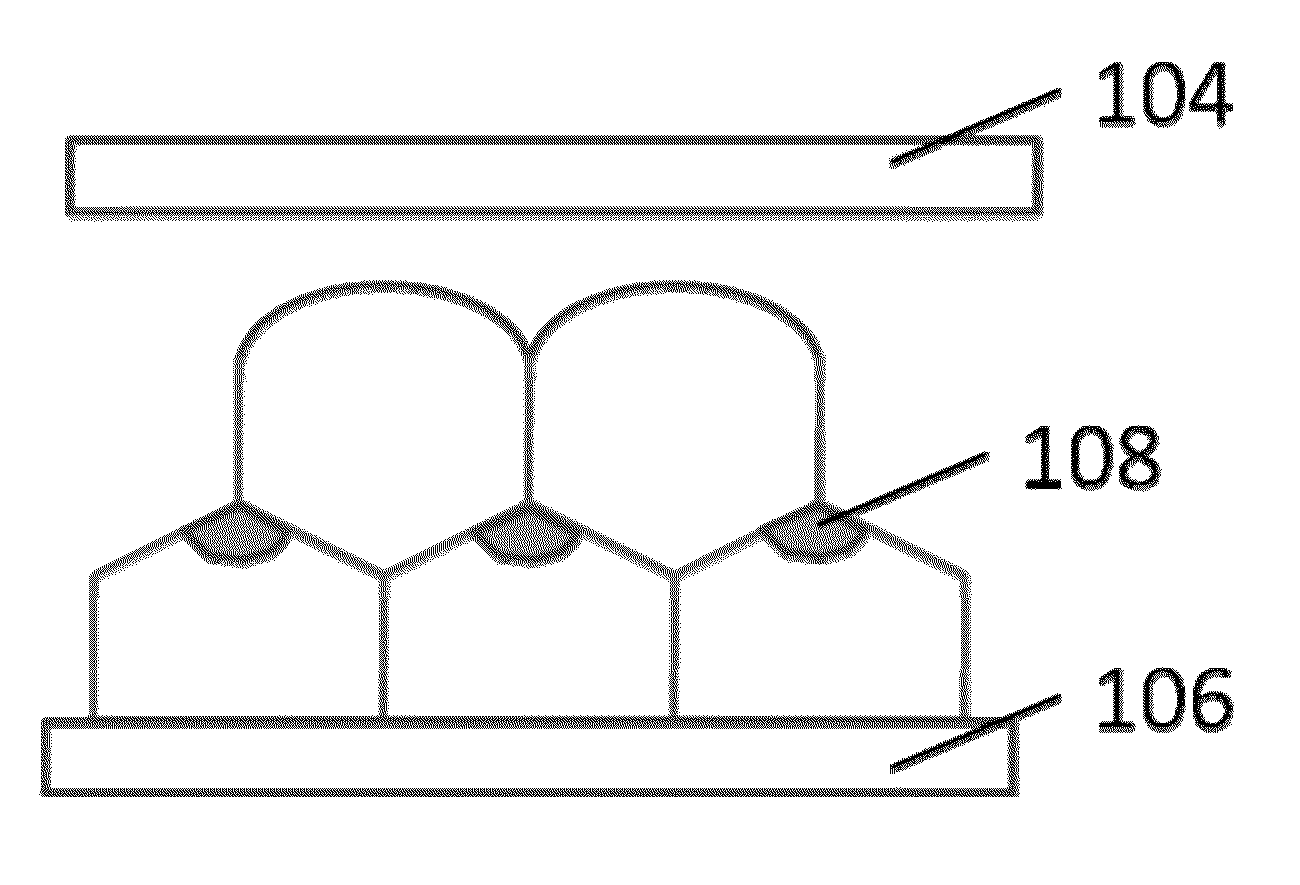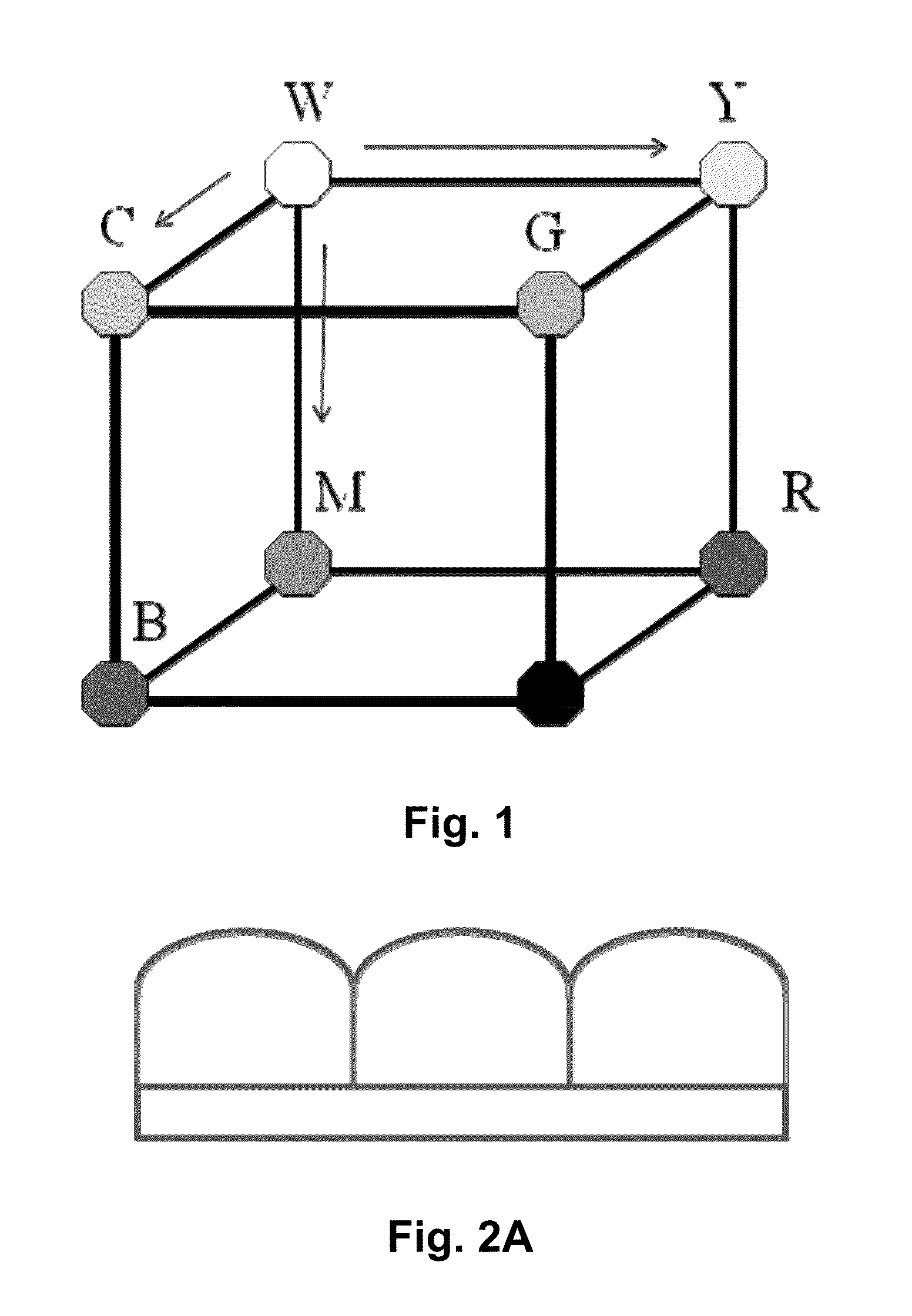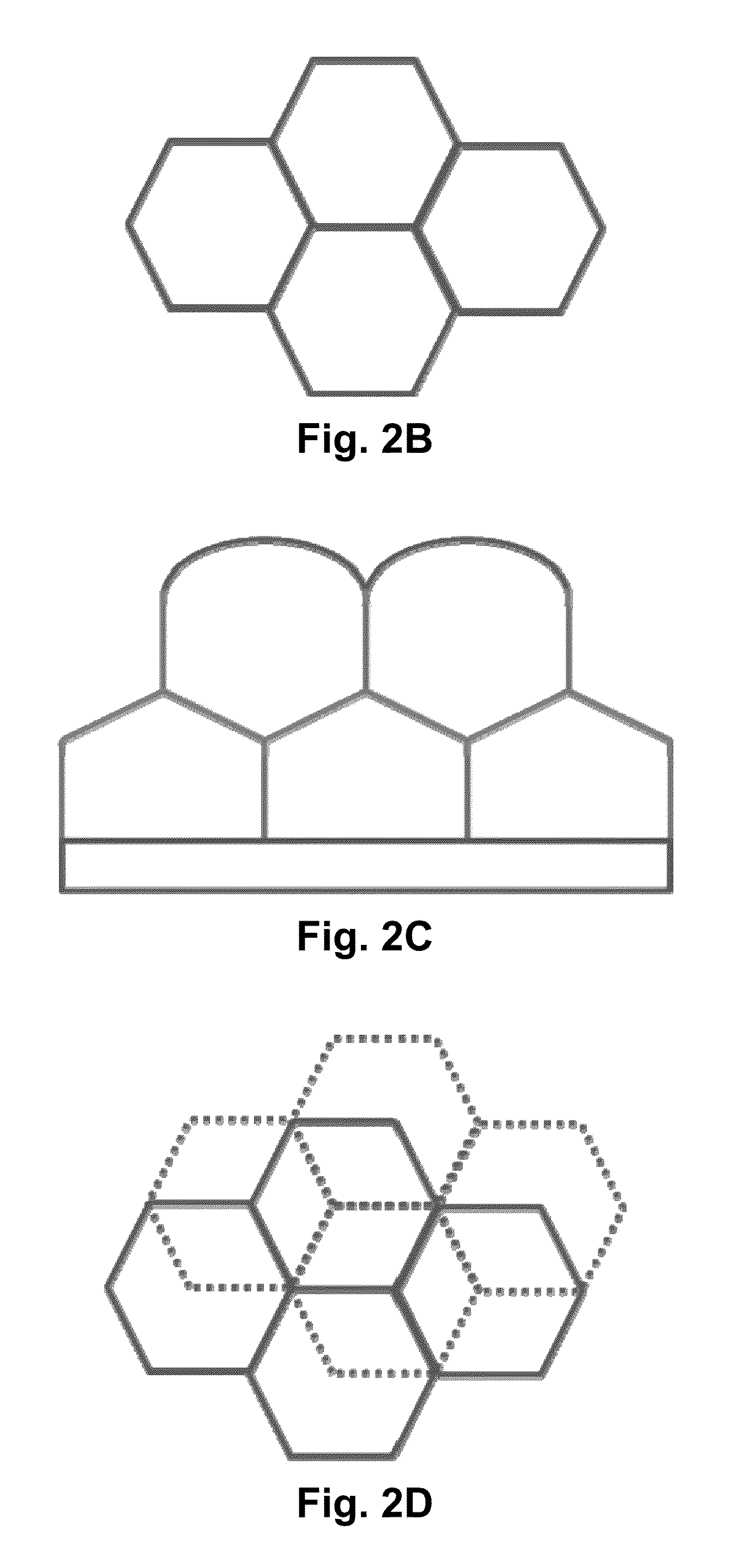Multi-color electro-optic displays
a technology of electro-optic displays and multi-color, applied in optics, instruments, optical elements, etc., can solve the problems of inadequate service life of these displays, gas-based electrophoretic media is susceptible to the same types of problems, and the use of these displays is prevented, etc., to achieve low viscosity fluid, reduce haze dispersion, and increase absorption
- Summary
- Abstract
- Description
- Claims
- Application Information
AI Technical Summary
Benefits of technology
Problems solved by technology
Method used
Image
Examples
example 1
First Medium Containing Red, Green and Blue Pigments
[0134]The pigments used in this Example were:[0135]Clariant Hostaperm Pink E 02, a red quinacridone pigment (available commercially from Clariant Corporation, 4000 Monroe Road, Charlotte N.C. 28205), stated by the manufacturer to have a specific gravity of 1.45, a surface area of 77 m2 / g, and an average particle size of 90 nm;[0136]Clariant Hostaperm Green GNX, a green copper phthalocyanine pigment from the same manufacturer, and stated by the manufacturer to have a specific gravity of 2.05, a surface area of 40 m2 / g, and an average particle size of 50 nm; and Clariant Hostaperm Blue B2G-D, a blue copper phthalocyanine pigment from the same manufacturer, and stated by the manufacturer to have a specific gravity of 1.6, a surface area of 44 m2 / g, and an average particle size of 75 nm.
[0137]Millbases of each pigment containing approximately 20 percent by weight of the pigment in d-limonene and 0.0044 g of Solsperse 17000 per square m...
example 2
Second Medium Containing Red, Green and Blue Pigments
[0138]Example 1 was repeated except that Clariant Ink Jet Magenta E02 VP 2621, a quinacridone pigment having an average particle size of 70 nm, was substituted for the pink pigment used in Example 1. Again, the millbases were also blended to produce a mixed dispersion having a color as close to black as possible. The results are shown in Table 2 below.
TABLE 2Color (saturated)L*a*b*% R% G% BRed39.645.6−17.610000Green21.110.1−28.501000Blue22.222.6−17.600100Black31.00−16.947.4052.6
Again, the blended “black” tended to green, and since a suitable alternative blue pigment could not be located, it was determined that a major change in the pigment set was necessary.
example 3
Medium Containing Green, Violet and Yellow Pigments
[0139]Example 1 was repeated except that the pink and blue pigments were replaced with Clariant Hostaperm Violet RL02 and Clariant Novoperm Yellow 4G VP2532 from the same manufacturer. The former is a dioxazine pigment stated by the manufacturer to have a specific gravity of 1.49, a surface area of 80 m2 / g, and an average particle size of 50 nm, while the latter is a disazo pigment stated by the manufacturer to have a specific gravity of 1.44, a surface area of 33 m2 / g, and an average particle size of 162 nm. Again, the millbases were also blended to produce a mixed dispersion having a color as close to black as possible. The results are shown in Table 3 below.
TABLE 3Color (saturated)L*a*b*% G% P% YGreen21.110.1−28.510000Purple30.44.220.801000Yellow46.2−2.785.200100Black31.00057.822.919.3
As may be seen from Table 3, the blend of this set of pigments produces a good, neutral black.
[0140]A polymer-dispersed electrophoretic medium was ...
PUM
| Property | Measurement | Unit |
|---|---|---|
| optical densities | aaaaa | aaaaa |
| diameter | aaaaa | aaaaa |
| tetrahedral angle | aaaaa | aaaaa |
Abstract
Description
Claims
Application Information
 Login to View More
Login to View More - R&D
- Intellectual Property
- Life Sciences
- Materials
- Tech Scout
- Unparalleled Data Quality
- Higher Quality Content
- 60% Fewer Hallucinations
Browse by: Latest US Patents, China's latest patents, Technical Efficacy Thesaurus, Application Domain, Technology Topic, Popular Technical Reports.
© 2025 PatSnap. All rights reserved.Legal|Privacy policy|Modern Slavery Act Transparency Statement|Sitemap|About US| Contact US: help@patsnap.com



